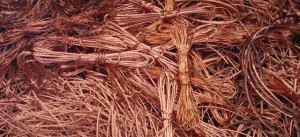
By Josh Kerns, mynorthwest.com
Totally gullible, ridiculously politically correct or some combination of the two? When it comes to Seattle City Light, KIRO Radio’s Dori Monson argues both in a scam involving some supposed Native American charity workers and the theft of 21 tons of scrap copper.
King County Prosecutors have now charged three men for the brazen theft. And it’s not just what they took but the way they got it that has Dori and a lot of other people scratching their heads.
Charging papers say two of the men showed up at City Hall in April clad in full Indian garb, claiming to be “Chief Little Bear” and “Joe Wolf” – tribal members they said were running an arts and crafts program for disabled Cherokee kids, the Seattle P-I reports.
The men – whose actual names are Michael George and Jim Costa – managed to talk their way into a meeting with City Light Superintendent Jorge Carrasco.
The suspects displayed copper bracelets, necklaces and other trinkets, and asked Carrasco to donate copper to their charity.
A police report says when asked for a business card, the men instead claimed they had a bus full of disabled children circling the block and needed the wire right away. So rather than vetting them further, Carrasco approved a donation and another City Light executive met them at an Industrial District storage lot and pointed out 100 pounds of copper wire they could take.
The men returned later on with a couple of rented trucks and loaded them up with far more than just 100 pounds of wire. The scammers managed to take off with 42,500 pounds of scrap wire worth $120,000.
City Light spokesman Scott Thomsen tells the P-I all the stolen wire was ultimately recovered in Fort Worth, Texas, where it had been shipped.
“Unfortunately, we were victimized by these con artists,” Thomsen says. “These guys are professional at this.”
Needless to say, Dori has no sympathy for City Light.
“You’ve got to be kidding me. You fell for this and you’re assigning the blame to the fact that these guys were professional con artists?” Dori says.
“We can’t even get politicians on our air to talk to me, and because we have a culture at city hall, and everybody is so politically correct down there, they start falling all over themselves.”
Producer Jake couldn’t agree more – once he stopped laughing at the absurdity of the situation.
“This isn’t an Ocean’s 11 scenario. They just walked in with a headdress and a fake name and got them to give them everything.”
While City Light recovered the wire, Jones and Costa remain at large. Officials say they’ve pulled off similar scams around the state.
“This is what political correctness does to you. It makes you into boobs and ninnies,” says Dori. “You’re so afraid to offend that you don’t even do the slightest amount of vetting before you take people down to your secure facility because you are so desperate to help out the Native Americans and the disabled kids that you don’t even check them out?”

